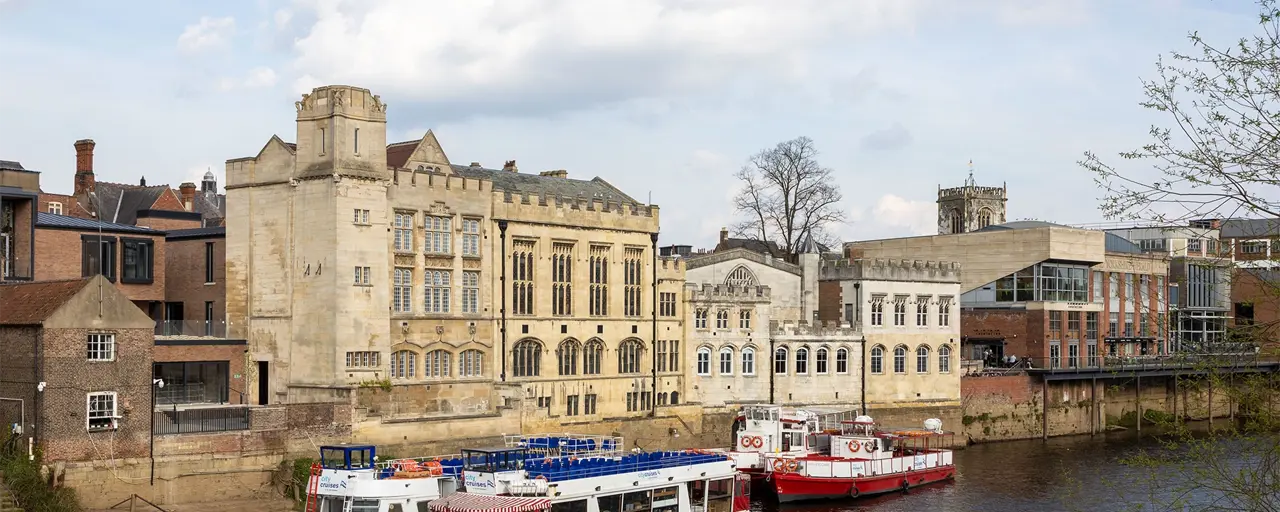The refurbishment and remodelling of City of York Council’s grade I, II* and II listed, 15th-century Guildhall to create state-of-the-art co-working facilities in the heart of the historic city.
KEY INFORMATION
Location: York, United Kingdom
Date started: 2015
Completion date: 2022
Client type: real estate
Main capabilities: cost and commercial management
Building on a rich history with modern needs
Built between 1449 and 1459 as a meeting place for the city’s guilds, the iconic Guildhall in York, which faces the River Ouse, has entertained many famous royal visitors over its 500-year history.
In 2017, major plans were drawn up to restore and re-develop the building, incorporating modern elements around the historic core of the Guildhall to secure the long-term future of the site. The £20.4m restored complex offers a range of workspace solutions, with café, conferencing and event spaces, including the impressive Main Hall. The building also includes coworking and collaboration areas, offices and meeting spaces for community groups and social enterprise.
The design also aims to improve public access and connectivity throughout the complex and offers improved links to the adjacent retail centre and independent cinema development.
Sustainability is key
Backing onto the River Ouse provided a perfect opportunity to transport materials to and from the site by water, avoiding a flow of heavy construction traffic through the city’s narrow historic streets during construction stages. During construction over 1,000 river deliveries were made to import equipment and materials.
The thermal insulation of the existing, listed building was improved significantly, and the existing roof was thermally insulated, including the roof of the Guildhall. Secondary glazing was also installed to prevent heat loss from the building and heat gains through the windows, significantly reducing the need for mechanical cooling.
A river water source heat pump was installed to provide low-carbon heating and cooling of the building with water taken from the river. When compared with fossil fuel energy solutions, the installation of this heat pump will create carbon savings of around 40 tonnes per year.
A bright future
We played an integral role from the initial design competition held in 2015, assessing designs and fee proposals for the onboarding of the design team, through to completion of the project in 2022. During this time we developed cost plans, facilitated market engagement, and provided risk and value management and post-contract commercial administration, including bespoke cost reports to align with the council’s needs.
We were instrumental in supporting the Council to create and maintain a collaborative and effective team to complete the transformation of the historic building from a long-term liability into a successful and viable business.
The impact is far reaching for the city. The building has been protected from further deterioration, and the development costs will return on investment over the next 20 years. The project hopes to bring an estimated £117m boost to the city’s economy over the next five years and create up to 250 jobs in high-value sectors.
Cllr Nigel Ayre, Exec Member for Finance and Performance (2019-2023) at City of York Council, said:
This project has taken one of the most important heritage buildings in the UK and, through excellent design, careful investment and very high-quality construction, built a new part of York’s future.



